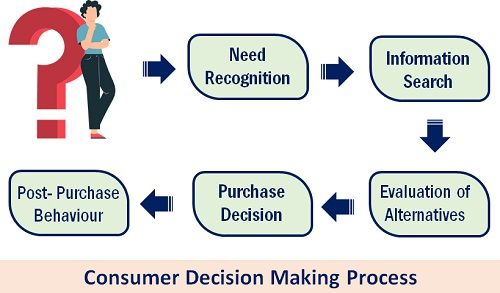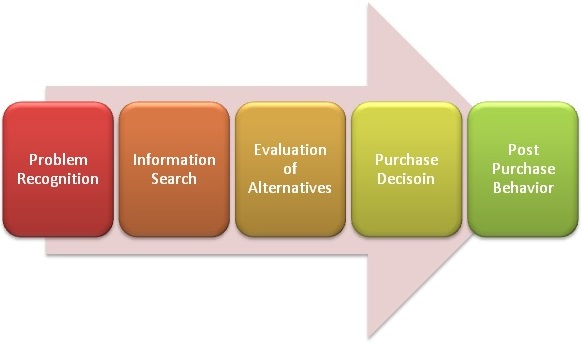As the world evolves, so do consumer habits. Over the past two years, the world has had to adapt to constant changes—the unexpected challenges—the pandemic has brought. Social restrictions may now be easing, but today’s situation will leave a lasting impression regarding how we think, feel, and shop.
While several factors influence the fast-changing consumer behavior, what remains consistent is the journey consumers go through when making a purchase. Thus, understanding consumer behavior is essential to creating a marketing campaign that resonates with your audience. Continue reading as we walk you through the steps in the consumer decision-making process.
What is the Consumer Decision-Making Process?
In 1910, American psychologist John Dewey theorized five stages to the consumer decision-making process. While technology and several other factors have affected this process over time, this theory remains: consumers don’t instantly decide to buy.
Think about your thought process when buying something—particularly a big-ticket purchase. You consider what you need, research, and compare available options before taking the plunge. Afterward, you evaluate whether you made the right decision.
For your business to maximize profit, you must pay attention to every stage in the buying process—implement conversion strategies that will direct your target customers to the point of sale.
What are the 5 Stages of the Consumer Decision-Making Process
Stage 1: Need Recognition/Problem Recognition
The first step in the buying process is a customer recognizing the need for a product or service. This awareness—whether triggered by internal or external stimuli—results in the same response: a want. This would then prompt the customer to gather information and research options to fulfill that want, which leads us to step two.
How can you influence customers at this stage?
You want your customers to recognize and make them feel like you’re providing them a solution to their problems. With brand awareness, people will be able to recall and remember your business. It may not immediately result in a sale, but they will be more likely to buy from you than a lesser-known competitor when faced with a decision to buy.
Stage 2: Information Search
At the information search stage, the customer starts researching their options, trying to learn more about the products/services that can potentially satisfy their needs. These days, that mostly means searching on Google.
The buyer also assesses the risks, probably putting in more time to list the pros and cons of each option to help them come up with a decision. They may also gather information through other sources like recommendations, promotional ads, and even previous experiences they may have had using a particular brand.
How can you influence customers at this stage?
When a consumer seeks an answer, you have to be present. The level of information they would need depends on how much they already know about the solution and the available options. It explains why you must present yourself as an expert—plan out the informational content you will create to provide them with answers, regardless of where they are already in their search.
Stage 3: Evaluation of Alternatives
Once the buyer has determined the solution to their problem, they will start looking for the best option available based on varying factors like price, quality, availability, or something as subjective as color or style. At this stage, they may compare prices, read reviews, or ask for recommendations to determine which product/service suits their needs the most.
How can you influence customers at this stage?
As a marketer, your job is to convince people that your product is a better choice amongst others. Your website should present your product’s best features and show them why you are the best option—probably that your prices are competitive or you have key features unique to you. In a rare situation where you’re too identical to your competitor, word of mouth is what will set you apart.
Stage 4: Purchase Decision
Now that the customer has gathered all the facts and weighed their options, they’re ready to decide on a purchase. If nurtured properly, the customer will recognize you as the best option and might choose your product.
But, wait. Did you notice how we mentioned “might”? It’s because you can still lose a customer at this stage.
How can you influence customers at this stage?
Your goal is to get the customer to complete the purchase. Otherwise, risk losing them forever. Make the checkout process as easy as possible so that they won’t have time for second thoughts: What if there are better options? Should I wait for this to go on sale? Is there something I failed to consider?
The customer may abandon their cart and jump back to the earlier stages. They may end up back to you, or maybe they will not.
Stage 5: Post-Purchase Evaluation
This is where the customer reflects on their purchase: Was the product useful? Am I happy with the purchase? Would I buy it again? When the product has satisfied the customer’s expectations, they’re more likely to spread the good news and influence others about their purchase. Unfortunately, this can also be the case with negative experiences.
How can you influence customers at this stage?
Your responsibility as a business doesn’t end with making a sale. You should make sure that your customer has had a positive experience with your product—your business, overall. Ask yourself the following questions:
- Did your product/service solve their problem?
- Is the customer happy with their purchase?
- How can you turn this one-time customer into a repeat customer?
After post-purchase, engage your customers with follow-up emails, newsletters, discount coupons, or anything that can give your brand a recall.
Takeaway
Understanding the consumer decision-making process is key to getting them to choose your brand. Use these tips above to fine-tune your marketing efforts and nurture your target audience.
Ready to get started? Createmoto is a digital marketing agency that can help you influence your customer’s behavior and attract them to purchase your products/services.
Get in touch with us today!






